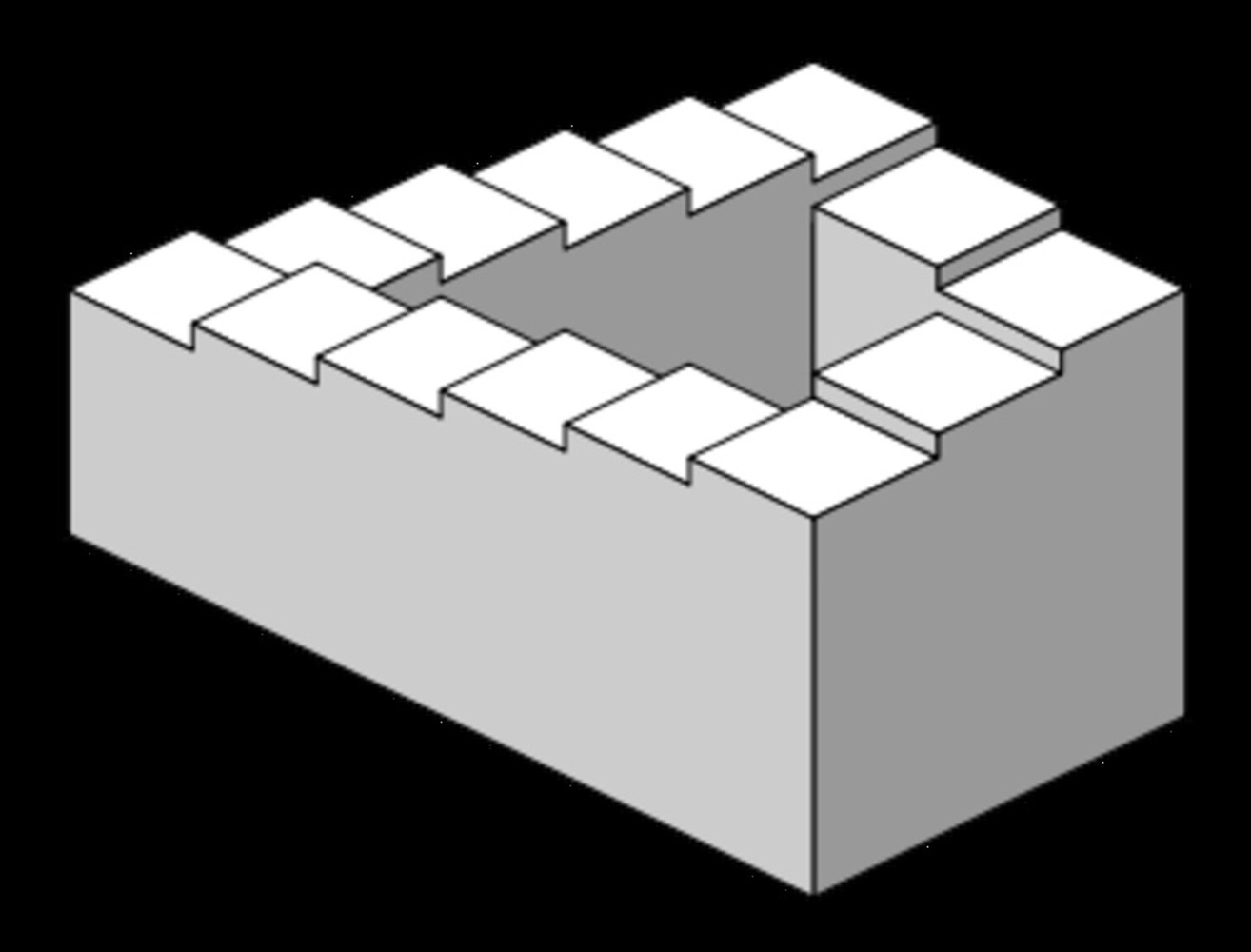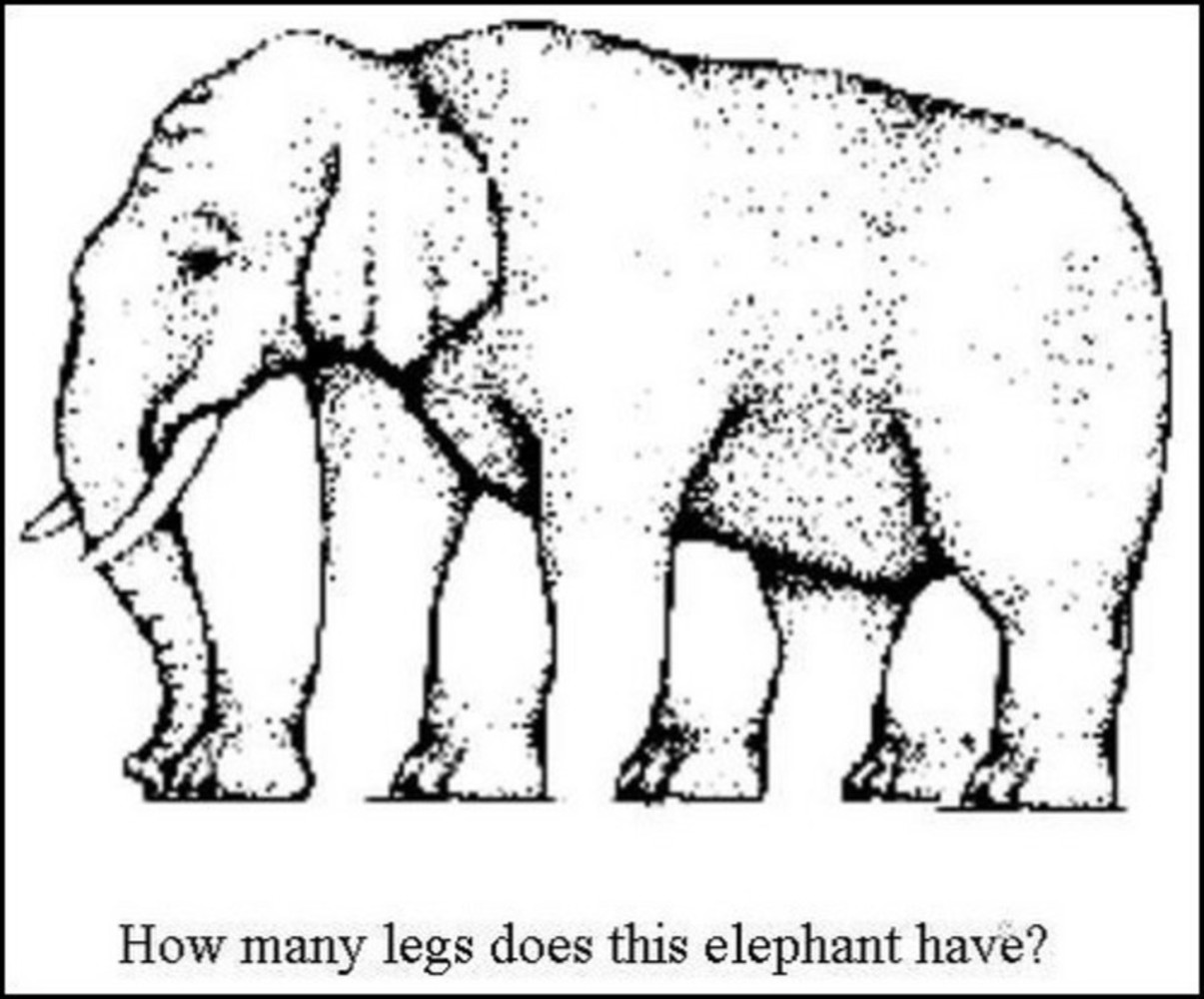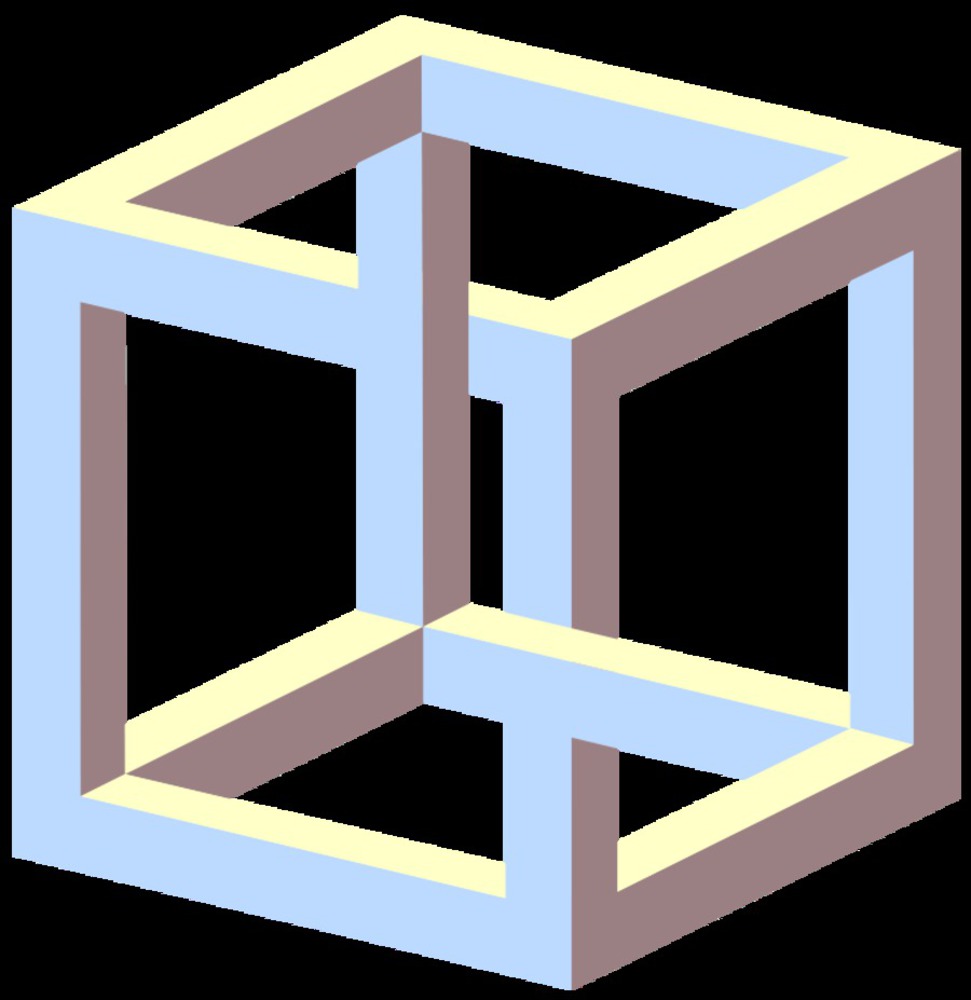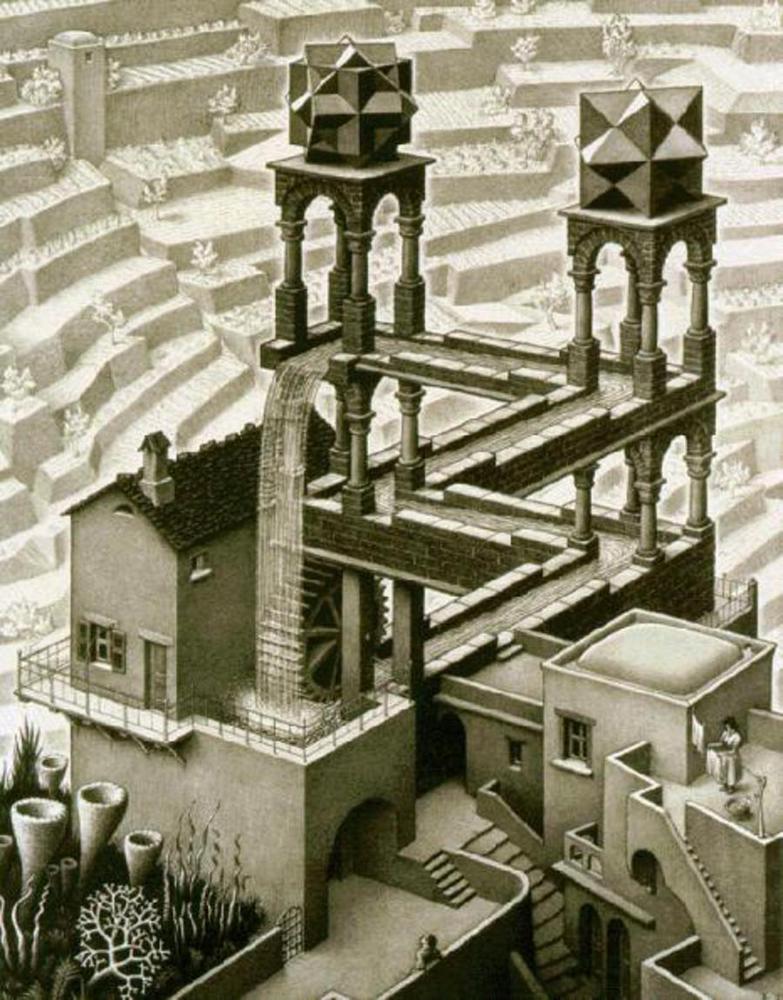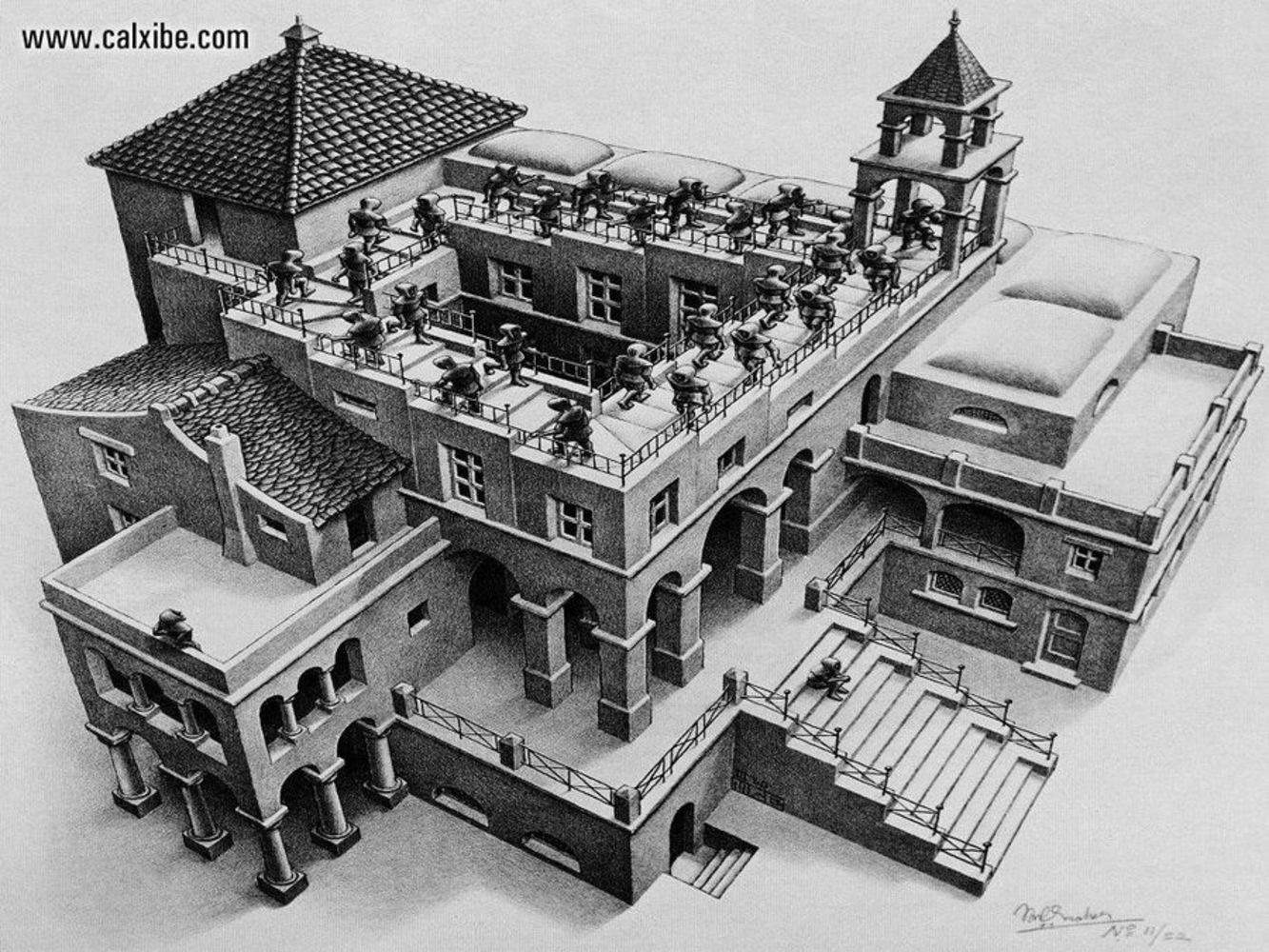A 2d figure that is subconsciously seen as the representation of a 3d object. The illusion works differently for each separate instance, but in general, the viewer sees the figure as a 3d figure, even after a brief inspection reveals that the object could not possibly exist in 3d space.
Outcome
Obviously, as they are physically impossible, there aren't any true examples of an impossible object. Any real life examples of impossible objects are either 3d imitations of the 2d phenomenon or 2d themselves. The former only permit the illusion when viewed from a certain angle. Thus both are generally only manifested as art, since they're unlikely to occur naturally.
One of the most famous impossible objects is the Penrose Stairs. I find this the most compelling and interesting of the major impossible objects because it depicts an object that people interact with on a daily basis, whereas most other impossible objects as simplly geometric in nature. The Penrose stairs also have some symbolic value given that one can scale the stairs yet never get any higher, suggesting the futility of one's pursuits in life.
Lastly, I found the impossible cube also quite compelling. It is a derivative of the Necker Cube, however this illusion is more obviously meant to be viewed as a 3d object. Additionally, it is also interesting to me for its resemblance to a tessaract, an object associated with the 4th dimension theorized of by mathematicians and philosophers for quite some time. The tessaract is the 4th dimensional analogue to the 3 dimensional cube.
M.C. Escher's "Waterfall" is one of his most notable works, famous for its use of impossible geometries to depict a series of seemingly everyday objects. At first, the painting looks not at all out of place, however after some closer inspection, the viewer realized the impossibility of the construction. I chose this work because I'm a fan of Escher's work in bringing the impossible to the mundane to create a very surreal scene.
I think this particular illusion is very compelling precisely because it is just that: an illusion. Many optical illusions operate via deficiencies in the human visual system, and could thus be somewhat reproduced through visual means. However, this is not so for the impossible object, this illusion instead uses the human brain's propensity to interpret 2d figures as 3d object. Because it is impossible this object to exist in 3d space, the fact is that this 'object' exists only in our minds, and thus in a way cannot be reproduced. Thus I cannot find any examples of an impossible object in the 'wider world' apart from those specifically depicted in art.
This is a sculpture of a Penrose triangle, located in Perth, Australia. I chose this because it is one of few works that attempt to bring the impossible objects, formerly confined to the page, to the 3 dimensional world. Though it is an imitation, I found it interesting because it brings a bit of impossibility and irrationality to the viewer's everyday life.
Reflection: I learned that I should probably choose my topic more wisely. While I am personally quite interested in impossible objects, I'm not so sure that it was the best optical illusion to pick since not only where there essentially no real world examples, but it was also an incredibly broad topic under which many other types of optical illusions, with varying mechanisms of operation, fall. In any case, if I were to do this project again, I'd do a more well defined and well documented optical illusion as my topic. Lastly, the uses of impossible objects in digital media would be quite limited. Even using photo manipulation software like Photoshop or 3d modelling software like Autodesk, I'd probably be limited to creating landscapes and using objects that are well known as impossible.
You can upload files of up to 20MB using this form.
